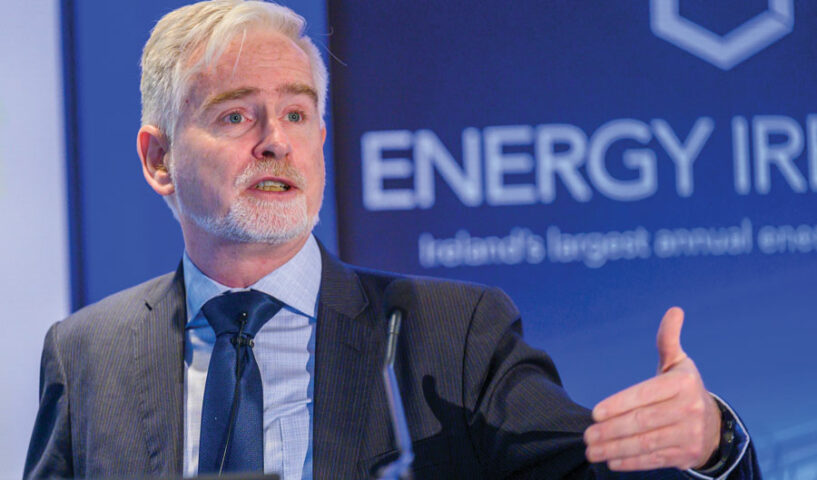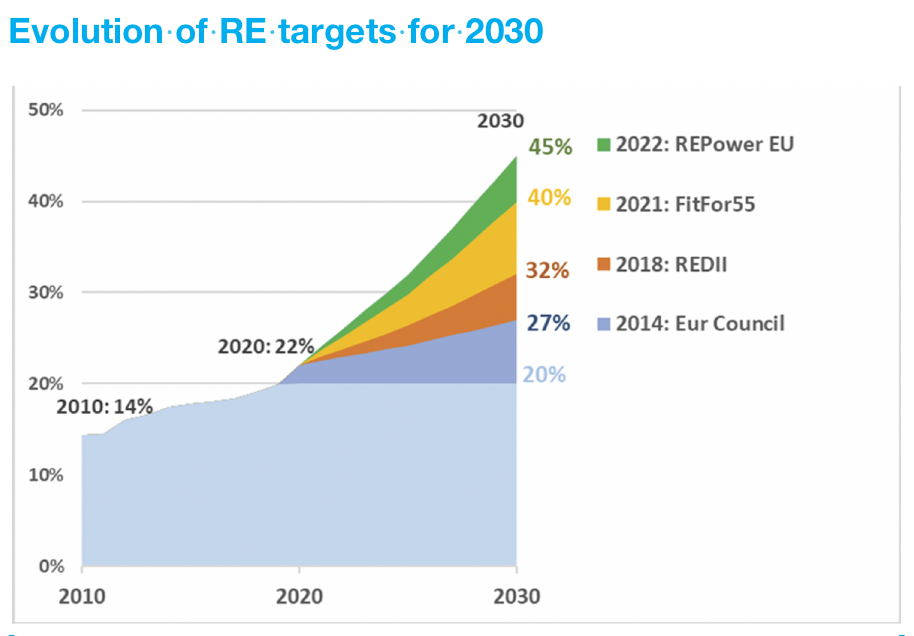
Brown to Green: Climate solution expansion
9th October 2023
The impact of planning and regulatory delays
9th October 2023Secure, clean, and affordable energy for Europe

Tom Howes, advisor on the green energy transition and energy market regulation for the European Commission, discusses measures taken and further measures to come to ensure Europe’s energy is clean, secure, and affordable.
While many may now associate the relative urgency on display in energy regulation with the Russian invasion of Ukraine in February 2022, Howes points out that Brussels’ response to the European energy crisis began with its issuance of an energy prices toolbox in October 2021 in response to rising electricity prices. 2022 then saw the invasion and the response of the European institutions, which included the publication of REPowerEU, the proposal of the gas storage regulation, amendments to the Fit for 55 plan, emergency measures on high electricity prices, high gas prices, RES permitting, and an emergency market correction mechanism.
“For me, the important message is that there is lots coming out; existing laws and targets, and priorities that may change from time to time, but the direction of travel is clear and constant,” Howes says. “We get more ambitious, the targets go up and there is more money to be spent, but the direction of travel is the same.
“We have had Fit for 55, where we ratcheted up the targets and there are a lot of supplementary sub policies that are meant to support that, whether it is on the planning, innovation, or technology sides. Then, there is the EU money that is flowing; I think there have never been more pots of money available for supporting different dimensions of energy technology development, whether that is technical support to help local councils or others implement and understand the laws and process permits, or investment finance through the EIB or the EBRD. That is just the starting point.”
Along with Fit for 55, REPowerEU is the blueprint for the future of securing a clean, secure, and affordability energy supply for Europe. Formulated in the immediate aftermath of the Russian invasion, it aims to wean Europe permanently off reliance on Russia for energy supply. Due to the emergency nature of Europe’s response to the invasion, Howes explains that the plan contains both short-term measures, such as “going around the world for every bit of LNG we can possibly find”, and long-term ones, such as “speeding up the rollout of renewables, heat pumps, wind projects, and ratcheting up legislative ambitions with our targets”.
As Howes explains, gas market volatility also reached into the electricity market, creating another area where the European Commission would have to intervene: “There was a feeling that the electricity market that has given us these unacceptably high price spikes is not coping with this kind of crisis. That is why there is now an initiative to review electricity market design. Consultations around that are picking up different things; on the one hand, the spot market is working is as it should be, but everyone feels that there has been too much exposure to the marginal price and to gas playing a price-setting role at a time when gas prices are ridiculously high.
“There is a desire to make more of the longer-term markets, so we are exploring what we can do to make more use of Contracts for Difference, power purchase agreements, and hedging requirements so that these price spikes do not take everyone unaware in the future or cause the havoc that they did in 2022. We are looking at the prudential requirements for suppliers, for instance, in terms of changing strategies there so that suppliers do not suddenly go bankrupt, as has happened, as a result of being too exposed to the price spikes.”
“We get more ambitious, the targets go up and there is more money to be spent, but the direction of travel is the same.”
Renewables Directive
In June 2023, political agreement was reached in Brussels on a revision of the Renewable Energy Directive, which saw the EU’s legally binding renewable energy target increase to a minimum of 42.5 per cent. Provisions included within the legislation also include the uncontroversial speeding up of permitting procedures. Under the revised directive, member states will be required to introduce several measures that guarantee the speeding up of permitting processes for renewable energy projects.
“Nobody feels comfortable that the permitting process is fast enough, simple enough, or risk-free enough,” Howes says. “This is being amended in the Renewables Directive and we also introduced short-term emergency legislation to speed up the process. We are trying to make the application of EU environmental legislation easier by creating go-to areas, where you do not need to go through all the particular steps for a particular project and you can group assessments.
“The message is that EU policies and measures are all going in the same direction. Stakeholders thought they had investment opportunities under the 2020 targets, and they delivered. Targets have become more ambitious, which will hopefully mean more investment opportunities, greater familiarity with the processes, and that it is becoming easier to invest.”
Concluding, Howes once again emphasises the need for coherence in planning and the importance of the message remaining the same: “We have got billions in the Recovery and Resilience Fund available to member states, but we have to make sure that these are consistent with each country’s own reform plans and the way they see things evolving. There is a need to continue to ensure complete coherence with the things we are pushing at the EU level and how that works out in each country.
“The direction of travel does not change. We do not want to bring surprises when we bring changes. We are making things better to address the problems stakeholders raise, to deliver the Green Deal for Europeans.”

